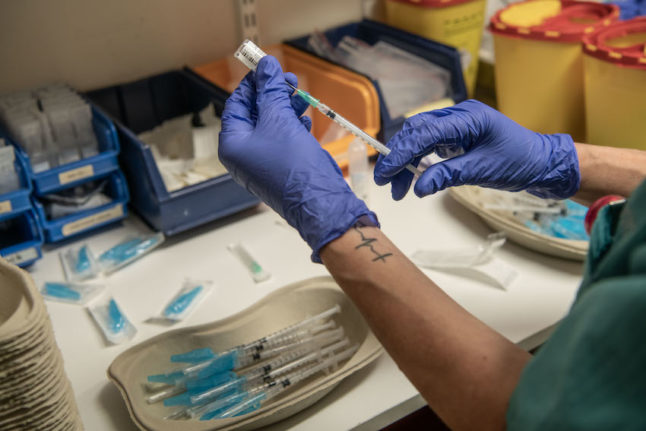Denmark is to enter a full national lockdown on Christmas Day, but some restrictions have already been in effect for a while. And there are signs that they are working, according to the national infectious disease agency, State Serum Institute (SSI).
“Since December 16th, test positivity of both PCR and antigen testing has shown that the restrictions are working,” SSI's director Henrik Ullum wrote on Twitter.
Siden 16 december har smittetal og positiv procent i både PCR og antigentest vist at restriktioner virker.
Tak til alle for at følge både råd og påbud??
Sundhedsvæsnet er presset. Bøn om fortsat fokus på:
•få kontakter
•god afstand
•hygiejne
Sikkert frem til vacciner?? https://t.co/coYWRzVA02— Henrik Ullum (@henrik_ullum) December 22, 2020
The test positivity rate – the percentage of tests that return positive results – has fallen from 3.5 percent on December 14th to 1.87 percent on Tuesday.
Under restrictions already imposed this month, restaurants, bars, cafes, gyms, sports centres and swimming pools are closed. Indoor areas at amusement parks, zoos, aquariums and similar types of attractions, as well as at museums, theatres, cinemas and libraries, are also closed to the public.
Shopping centres closed on December 17th, while businesses such as hairdressers, physiotherapists and driving schools were shut on December 21st.
All retail businesses, with the exception of supermarkets, pharmacies and other stores which sell daily essentials, will be closed from December 25th until January 3rd.
Assembly restrictions of a maximum of 10 people are also in place.
Another measure of infection spread, the R-number or reproduction rate, was reported on Tuesday to have fallen to 0.9, down from 1.2 last week.
If the R-number is above 1.0, the number of infected in a society will grow because each infected person will pass on the virus to an average of more than one other person. If the R-number is below 1.0, the number will decline.
Wednesday’s daily update from infectious disease agency SSI showed a slight fall in the number of Covid-19 inpatients in Denmark. The figure has risen sharply over the last week and now stands at 720, three fewer than yesterday.
3,297 new infections were registered by SSI in the 27 hours encompassed by the most recent update. 169,434 tests were conducted. The period extended beyond the usual 24 hours due to server issues at SSI.
26 people lost their lives with Covid-19 in Denmark during that time. The country’s death toll to the pandemic is now 1,096.
Infection figures from recent days point to a 20 percent per week reduction in infections, according to mathematical epidemiology professor Viggo Andreasen of Roskilde University.
“That is also what has been seen in many other countries that have introduced similar restriction,” Andreasen said.
“It means that, if you want to halve the number of new infections per day compared to the peak, the current restrictions must be maintained for another three weeks,” he added.
Thursday’s slight reduction in hospitalisations is not likely to mean these have peaked, according to the epidemiologist.
“We cannot expect the total number of hospitalisations to fall until a week from now,” he said.
“Unfortunately, I think that hospitals, especially in greater Copenhagen, must expect an increase of 20-30 percent in the total of new hospitalisations before we see the peak,” he added.
READ ALSO: Danish hospitals challenged as number of Covid-19 patients quadruples



 Please whitelist us to continue reading.
Please whitelist us to continue reading.
Member comments